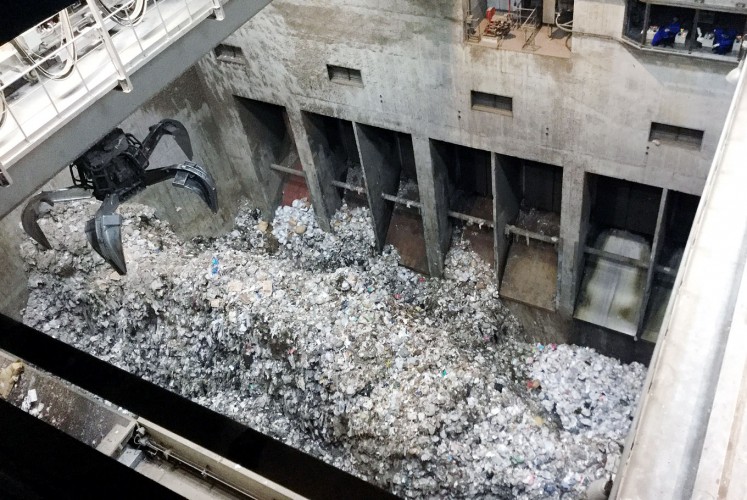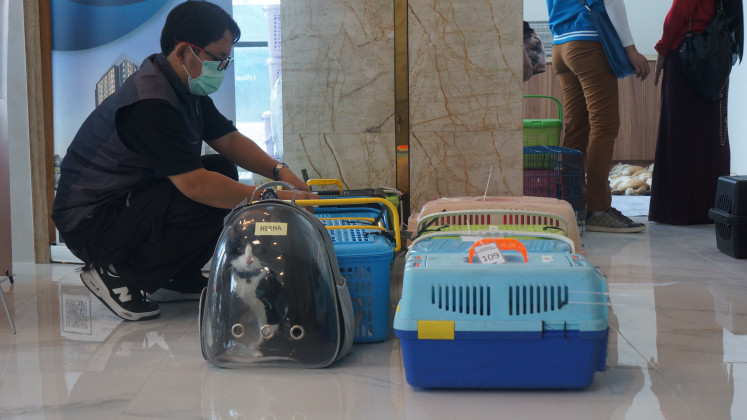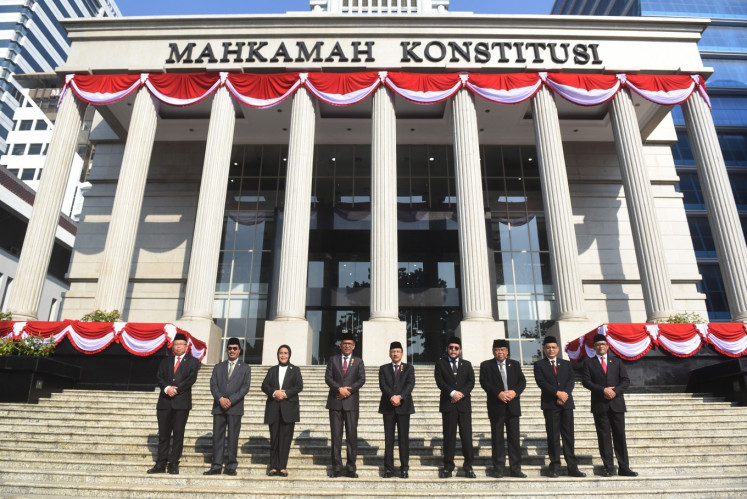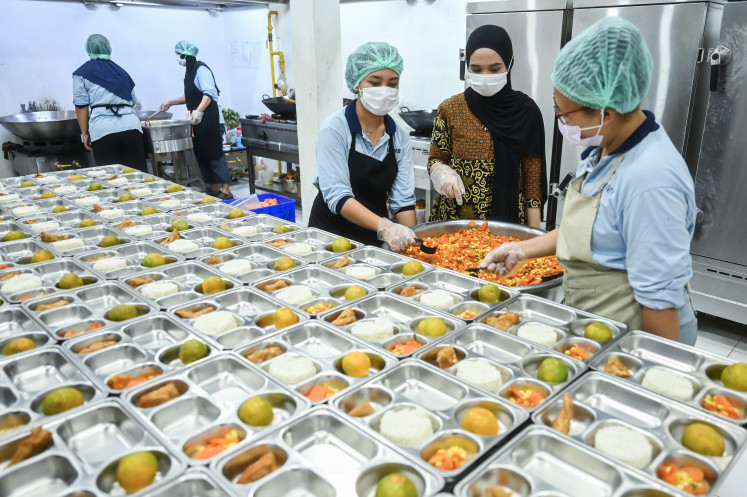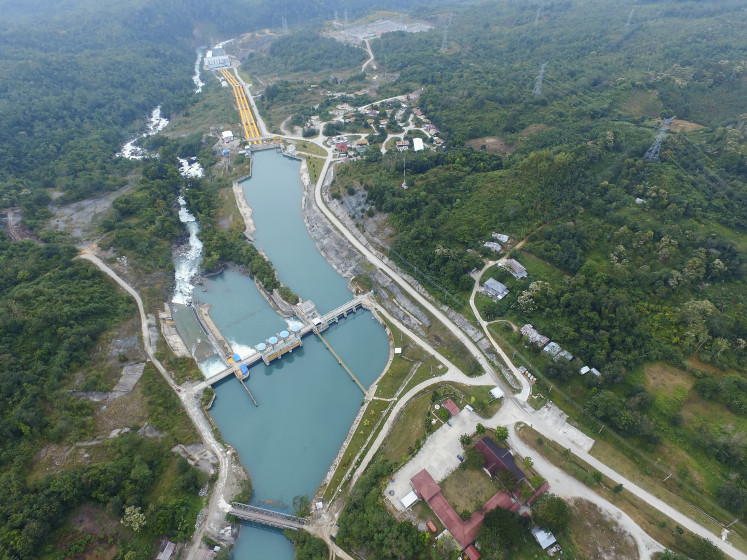Popular Reads
Top Results
Can't find what you're looking for?
View all search resultsPopular Reads
Top Results
Can't find what you're looking for?
View all search resultsTokyo going at full throttle to manage trash
The movement to sort garbage in one of the world’s largest metropolises started in 1989 when solid waste hit a record high of 4.9 million tons.
Change text size
Gift Premium Articles
to Anyone
 The power of heat: Tokyo’s Ota Incineration Plant director Souji Yukio explains the process of burning waste under very high temperatures in a furnace. (JP/Linda Yulisman)
The power of heat: Tokyo’s Ota Incineration Plant director Souji Yukio explains the process of burning waste under very high temperatures in a furnace. (JP/Linda Yulisman)
T
he Japan International Cooperation Agency (JICA) invited a group of ASEAN journalists to gain first-hand experience of the East Asian country, particularly regarding the technology it developed to deal with the impacts of rapid economic growth after World War II. The report below elaborates on how its capital city, Tokyo, copes with urban issues, such as waste management and mass transportation.
Like other people in her ward, Miki Michihata collects garbage four times a week.
Two days are dedicated to burnable items like paper and clothing, while the remainder is for non-burnable items, including glass and electronics, as well as recyclables, such as PET bottles, newspapers and cardboard.
She usually puts the garbage out early in the morning before a garbage truck comes to pick it up between 8 a.m. and 10 a.m. in her neighborhood in Asakusa, Taito ward.
“It’s easy for me, but maybe it’s difficult for people from older generations, like my mother,” Michihata, who is in her 60s, said about the habit she adopted back in early 1990s.
While regular waste collection is free, people in Tokyo must pay for large items, such as washing machines and refrigerators, and prior to that, they must apply for the item’s removal via the city administration’s website.
The movement to sort garbage in one of the world’s largest metropolises started in 1989 when solid waste hit a record high of 4.9 million tons. The city administration ran the “Tokyo Slim” campaign to encourage households to reduce waste and to recycle items like cans and plastic bottles.
Now, the practice seems to come naturally and has become part of the culture of the city’s residents, making Tokyo a clean and nearly litter-free city. That’s despite the fact the city’s 9.3 million inhabitants produce an enormous amount of waste. The city, for instance, handled 2.78 million tons of garbage last year.
While the push to minimize waste in other megacities, such as Singapore and Taipei, usually involves fines, Tokyo has apparently not needed to discipline its residents. This is perhaps attributable to the efforts made to instil a sense of environmental awareness, including about waste, among its people, beginning at a very young age.
All elementary school students across the metropolis practice garbage separation. In Kubomachi Elementary School, the largest in Bunkyo ward, students must separate paper from trash and deposit it in recycling boxes placed in a common area.
“For my students, the 3 Rs [reuse, reduce and recycle] is an important concept they can learn easily and apply both at school and at home,” said headmaster Emiko Matsumoto.
Children at the school, which hosts 745 students across six grades, learn about environmental issues, including waste management, as part of the school’s curriculum. Fourth graders visit incineration plants and a landfill site so they can understand what happens to the trash they throw away.

“I think visiting the landfill site and seeing, with their own eyes, that there’s not enough space to accommodate all the trash has a huge impact on the students,” Matsumoto said.
“It’s more effective than solely studying in the classroom because the activity can leave a lasting memory and connect the experience with their daily attitudes.”
At present, Tokyo relies largely on two landfill sites in Tokyo Bay, the construction of which started in 1973 after the city administration declared a “war on waste” in 1971 as Japan’s capital was witnessing a considerable surge in garbage production against the backdrop of the country’s robust economic growth in the post-war era.
The landfill sites are the final destination for, among other things, ash generated from incineration plants in Tokyo’s 23 wards.
Thanks to the significant amount of waste that can be squeezed into incinerators, the lifespan of the landfill sites could be extended for the next 50 years.
The facilities for handling combustible waste could actually cut down waste volume to only one twentieth of the original weight, said Souji Yukio, the director of Ota Incineration Plant, the second largest among 21 incineration plants in Tokyo.
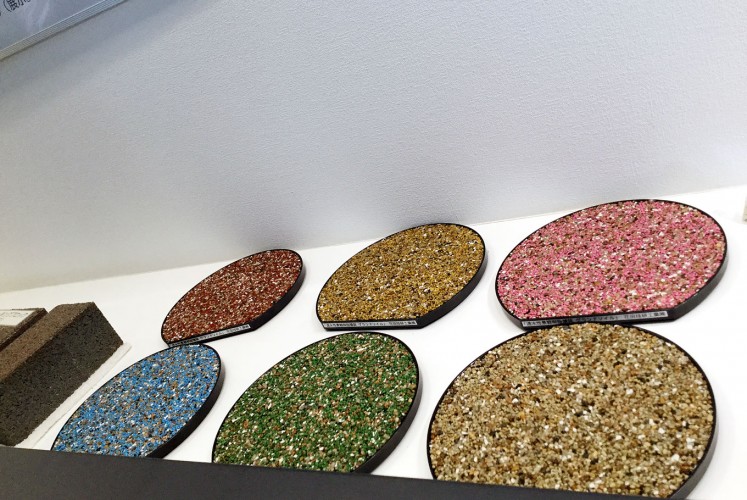
Like other plants, the process at the facility starts with 5,000 to 6,000 trucks delivering household garbage each day. It then processes 500 tons of waste in its two furnaces on a daily basis, slightly lower than their full combined capacity of 600 tons.
Located in a 92,000-square-meter area just one kilometer from Haneda airport, the incinerators turn household garbage from around 700,000 residents of Ota ward into several byproducts — exhaust gas, ash and heat energy.
The exhaust gas is safe for release into the air as it is treated properly to reduce hazardous toxins, particularly dioxins, after high-temperature burning of around 800-degrees Celsius, Yukio claimed.
Bottom ash is used for cement production or melted at a temperature of over 1,200-degrees Celsius and then cooled to make slag, a material used to produce paving blocks and other construction materials. Fly ash, meanwhile, is thrown into landfills.
Around 20 percent of the heat energy derived from the process, meanwhile, is used to generate electricity for the incineration plants, while the excess majority is sold to a power company.
Ota plant has collected 900 million yen (US$7.9 million) from selling electricity in the past year.
While technology may provide an answer for the endless flow of waste produced by people in their daily lives, it is environmental awareness that is the key to cleanliness in Japan.
